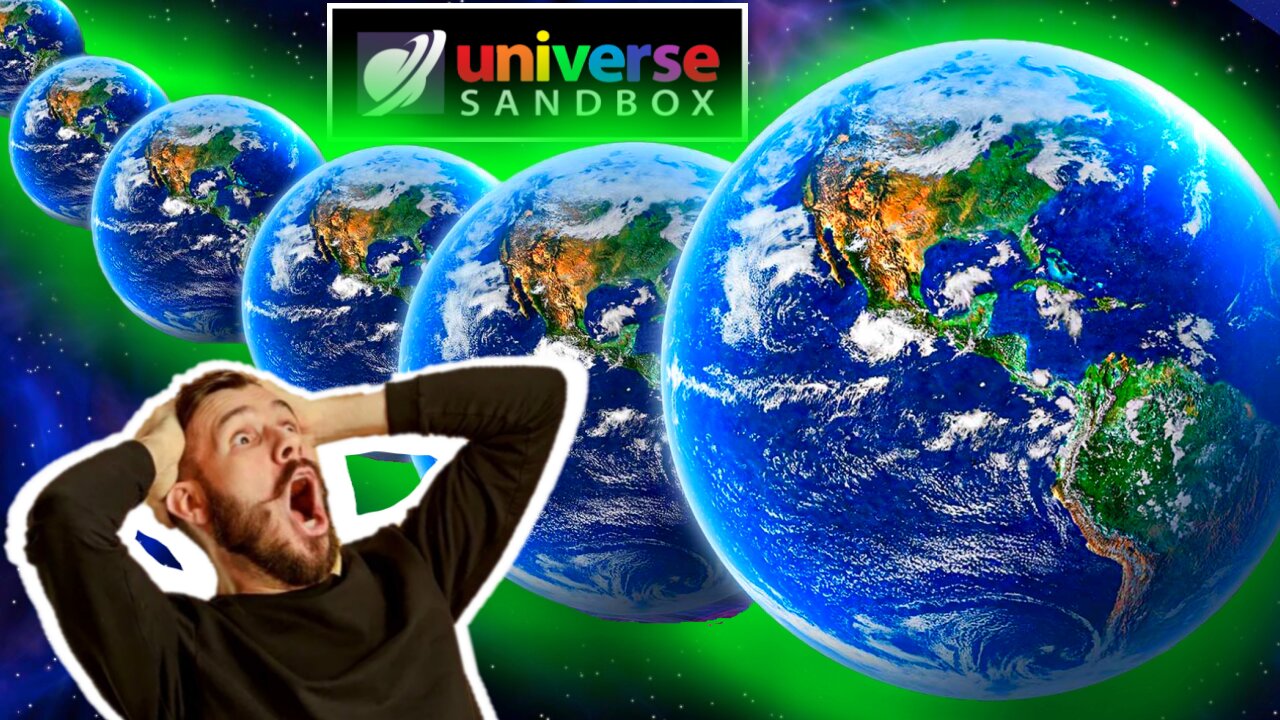Premium Only Content

What If WE Replaced EVERY PLANET....With EARTH? - UNIVERSE SANDBOX
Hypothetical Scenario: Earth-like Planets Replacing All Planets in the Solar System
To explore the implications of Earth-like planets replacing all the planets in our solar system, we need to consider several factors including planetary characteristics, orbital dynamics, potential for life, and the overall impact on the solar system’s structure.
1. Characteristics of Earth-like Planets
Earth-like planets are typically defined as terrestrial bodies that have conditions similar to those found on Earth. This includes a solid surface, a suitable atmosphere, and the presence of liquid water. If we assume that each planet in our solar system is replaced by an Earth-like planet, we can expect:
Atmospheric Composition: Each planet would likely have an atmosphere rich in nitrogen and oxygen, similar to Earth’s. However, variations could occur based on distance from the sun and other factors.
Surface Conditions: The surface temperature would vary depending on the planet’s distance from a star (in this case, our Sun). For example, a planet at Mars’ orbit may experience colder temperatures than Earth due to its greater distance from the Sun.
Geological Activity: Earth-like planets might exhibit geological activity such as volcanism and tectonics if they possess sufficient internal heat.
2. Orbital Dynamics
The gravitational interactions between these new Earth-like planets would significantly alter their orbits compared to their original counterparts:
Orbital Stability: The current arrangement of planets has been shaped by billions of years of gravitational interactions. Introducing multiple Earth-like planets could lead to instability in their orbits due to gravitational perturbations.
Resonance Effects: The replacement of gas giants like Jupiter and Saturn with terrestrial planets could disrupt orbital resonances that currently stabilize planetary orbits. This could lead to chaotic orbital paths over time.
3. Potential for Life
Assuming these new Earth-like planets have conditions conducive to life:
Habitability Zones: The placement of these planets within habitable zones would be crucial for sustaining life. For instance, if a planet were too close or too far from the Sun, it might not maintain liquid water.
Biodiversity: Each planet might develop unique ecosystems based on local conditions (e.g., climate variations), leading to diverse forms of life across different worlds.
4. Impact on Solar System Structure
The overall structure and dynamics of the solar system would change dramatically:
Asteroid Belt Dynamics: The asteroid belt located between Mars and Jupiter may become less stable without gas giants influencing its structure through gravitational forces.
Cometary Activity: The Kuiper Belt and Oort Cloud regions may also see changes in cometary activity due to altered gravitational influences from neighboring bodies.
SOCIALS:
YouTube - https://www.youtube.com/@TheBetterNASAProject
Rumble - https://rumble.com/user/WhatsNextVids
Odysee - https://odysee.com/@WhatsNext:5?view=home
TikTok - https://www.tiktok.com/@the.better.nasa.project
X - https://x.com/WhatsNe75388303
SUPPORT:
Patreon - https://www.patreon.com/user?u=37594401
Buy Me A Coffee - https://buymeacoffee.com/whatsnext
Cash App - https://cash.app/$YTpayments
-
 41:11
41:11
T-SPLY
5 hours agoProtesters Clash With Border Patrol In Charlotte!
30.9K15 -
 2:03:14
2:03:14
ThatStarWarsGirl
4 hours agoTSWG LIVE: I'm Back From My Channel Strike! Let's Discuss The Elephant In The Room
34.2K8 -
 2:59:04
2:59:04
I_Came_With_Fire_Podcast
16 hours agoAmerica's Hidden War | The Propaganda Through Line | An Ally Aids an Enemy
25.5K16 -
 2:14:16
2:14:16
TheSaltyCracker
7 hours agoDEMs Have Real Bad Week ReeEEStream 11-19-25
123K218 -
 7:15:50
7:15:50
SpartakusLIVE
8 hours agoNEW Redsec UPDATE || STACKS OF LOOT LATER?!
40K1 -
 2:34:17
2:34:17
Barry Cunningham
8 hours agoMELANIA TRUMP AND USHA VANCE VISIT MILITARY FAMILIES | DEMOCRAT SEDITION & MASSIVE HYPOCRISY
49.3K16 -
 1:17:12
1:17:12
ThisIsDeLaCruz
5 hours ago $0.65 earnedRunning Sound for The Weeknd
10.2K -

This is the Ray Gaming
5 hours ago $1.53 earned1v1 Me Bro! Ep1 - Mally Mouse | Rumble Premium Creator
11.4K3 -
 1:47:24
1:47:24
megimu32
6 hours agoOn The Subject: 90s Kid Sitcoms That Raised Us
12.5K9 -
 41:09
41:09
MattMorseTV
8 hours ago $48.14 earned🔴Top Dems. call for INSURRECTION.🔴
77.1K151